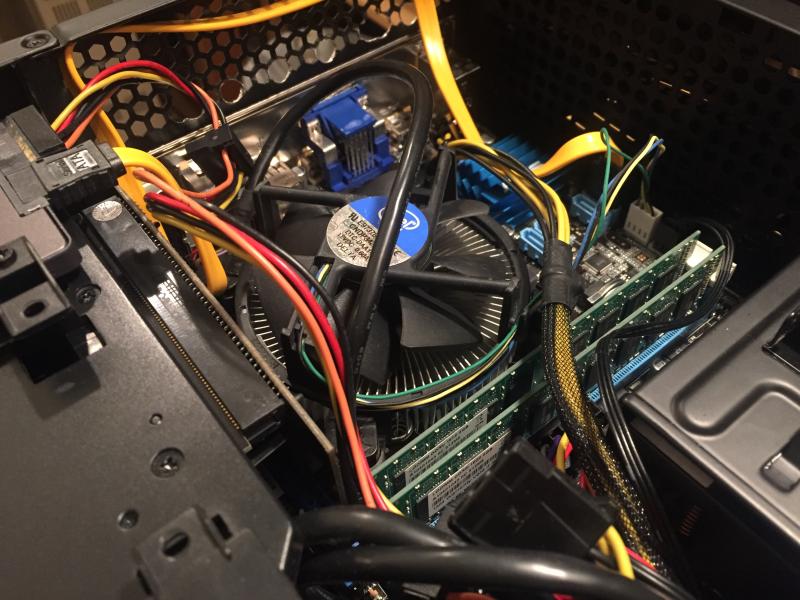
To make a long story short the eGPU setup was a pretty good portable solution, but not that convenient for day to day use, so it was time to put together another cheap desktop!
The constraints were more or less the same as those on my last build: I wanted the cheapest machine that could run WoWS maxed out at 1080p. That being said, I got a good deal on two used components early on, one of which then managed to complicate the parts selection process: these were a Silverstone RVZ01 case and a Gigabyte “Windforce” GTX960 graphics card.
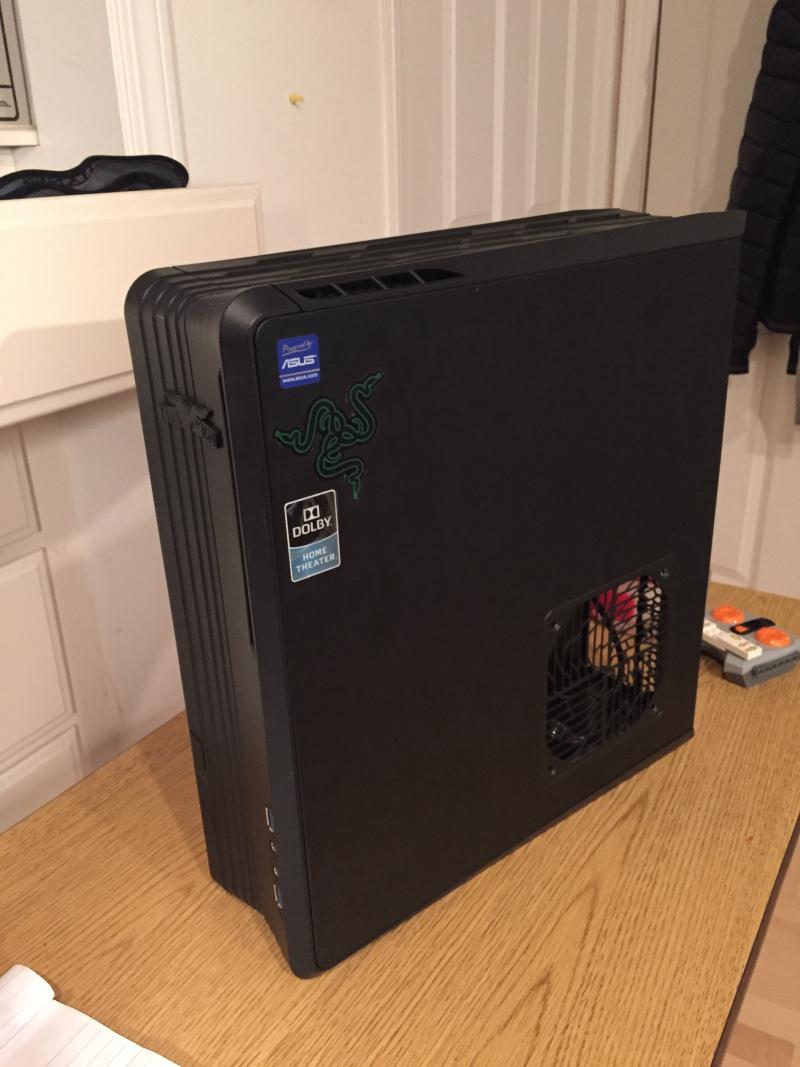
The RVZ01 is a SFF case, which is a good and bad thing. I’m all into SFF and USFF machines taking up less space, but I think the RVZ01 makes too many compromises to take up marginally less space:
- Instead of the standard ATX form-factor power supply, it uses an SFX PSU, which is rarer and more expensive
- The case only supports mini-ITX motherboards, even if you don’t use more than the first expansion slot
- The component layout is quite unusual and subsequently more complicated and finicky to set up
That being said, the overall dimensions are indeed quite compact, at 382mm x 350mm x 105mm. For me, the rectangular aspect ratio is also much more convenient than a more cubical aspect ratio.
Balancing the cost of CPU, memory, and motherboard was more annoying than it should have been. Basically the main issue is that ITX boards for current platforms are relatively cheap but DDR4 is expensive, whereas ITX boards for old platforms are relatively expensive but DDR3 is cheap. Ultimately I settled on a more expensive older board and cheap DDR3 because older CPUs tend to have better price to performance ratios, at the expense of having worse power consumption – not too big an issue here though.
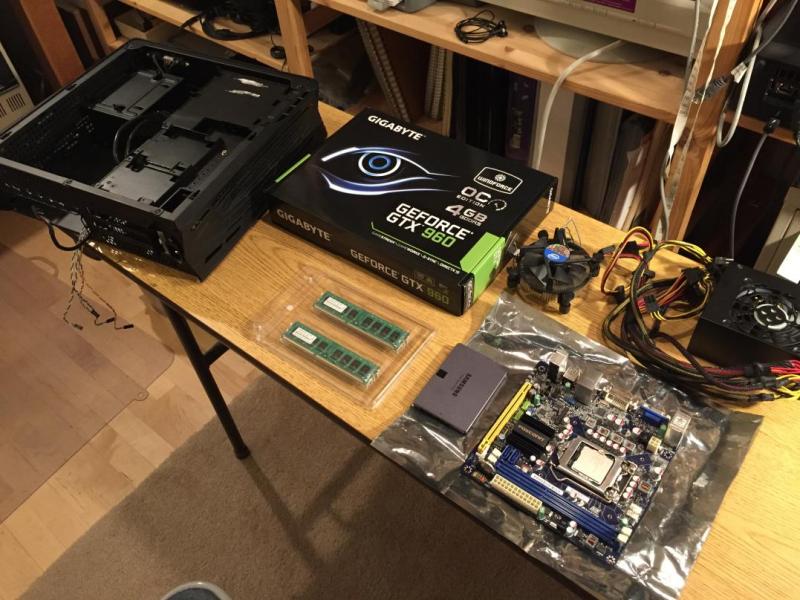
My CPU turned out to be the Ivy Bridge i5 3570S, a low-power (65W) quad-core with about the same performance as a current-gen, entry-level quad like the Ryzen 3 1200. The 3570S is an older CPU than i3 4130 I had before, and therefore less efficient, but again it’s not a big deal in the desktop space. The $80 ASUS P8H61-I am using was not the cheapest H61 ITX motherboard available, and not my first choice either, but the cheaper Foxconn board that was my first choice was DoA.
For the PSU I ended up paying almost $50 for a 450W unit from Silverstone’s own SFX series. With my last build I used a cheap 300W power supply because I was confident that I wouldn’t be running more than half the rated power at most, but I estimated (correctly!) that this build would top out at around 250W, so I wanted something good in the 300W to 400W range or something cheap in the 400W to 500W range. Well, the latter didn’t exist, so the ST45SF it was.
After that, 8GB of DDR3 is cheap and plentiful, and a stock heatsink is good enough since it is a 65W CPU and I’m not doing any overclocking. The final cost breakdown is as follows:
| PART | COST |
|---|---|
| i5 3570S | $48 |
| 8GB DDR3 | $30 |
| ASUS P8H61-I | $80 |
| Gigabyte GTX960 | $100 |
| Intel Stock Cooler | $7 |
| Silverstone RVZ01 | $40 |
| Silverstone ST45SF | $48 |
Not counting the price of the SSD I’m reusing (same as last time), that’s a grand total of $353, which is… well, expensive compared to the $223 of my last build! That’s unfortunate, but justifiable enough because:
- I’m buying a case this time
- I got lucky on the PSU last time
- The old system took up more space
- The new system is about forty percent more powerful on the CPU and GPU front
The SFF tax is probably the biggest piece of the cost delta: had I just built ATX this probably would have been under $300, making it just a hair better than the old system on the price/performance curve, but it’s whatever.
| CPU | PASSMARK CPU MARK SINGLE | PASSMARK CPU MARK MULTI |
|---|---|---|
| Pentium E2220 | 895 | 1331 |
| i3 4130 | 1551 | 4792 |
| i5 3570S | 1959 | 6700 |
| Ryzen 3 1200 | 1727 | 6814 |
| GPU | PASSMARK G3D MARK |
|---|---|
| 9500 GT | 275 |
| GTX 750 Ti | 3725 |
| GTX 960 | 5804 |
| GTX 1050 Ti | 5913 |
Passmark is just another synthetic benchmark you can use to gauge the relative performance of various parts. Here the 3570S beats the 4130 by about 40% (multi) and the GTX 960 beats the 750 Ti by about 55%. The Pentium E2220 and 9500 GT approximate the performance of my budget desktop from 2009 (see the end of this older post). The Ryzen 3 1200 and GTX 1050 Ti are just there for reference… if GPU and DDR4 prices weren’t so bad, I might have bought those instead.
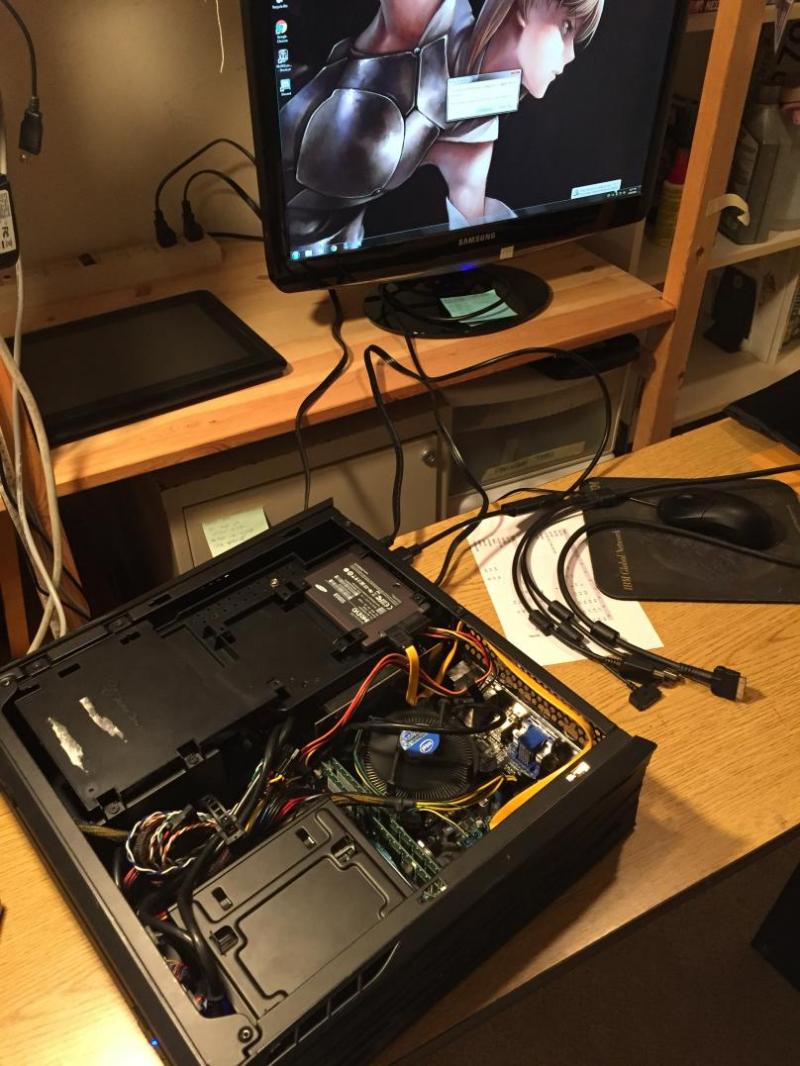
With the system assembled, you can see the odd part layout: in the above picture the front of the case is left, and the top of the case is down. The power supply is located in the front/top corner and exhausts up, while the graphics card (if you have a big one) is mounted on a riser and potentially takes up the entire bottom half of the case! There is space around the PSU for cables (but it’s tight, especially for the front panel panel header cables, which have to bend more than what feels safe) and a couple spaces here and there for 2.5″ drives as well as single spots for a slim optical drive and a 3.5″ drive.
The RVZ01 actually has affordances such that it can sit in multiple orientations, but the top-exhausting power supply seemed to be the most sensible to me. That direction allows for multiple intake fans near the bottom, which will eventually push (naturally rising) hot air out vents near the top. For the most part, the temps are reasonable; I don’t think anything cracks 80 under full CPU and GPU load, though anecdotally I think this system is a little noisier than the last one.
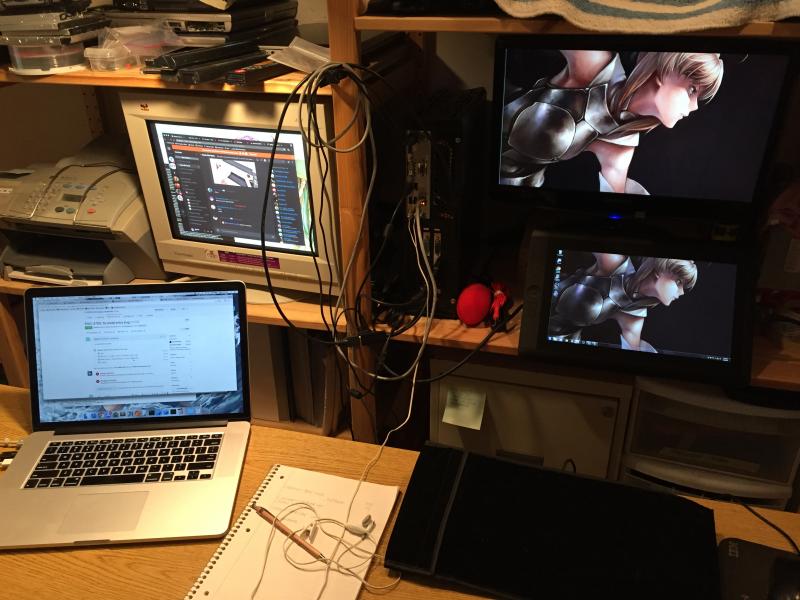
Finally, I’m trying something a little different for the setup. Usually for this secondary machine (primary still being my Fanless Desktop II) I’ve just used one monitor and called it a day, but I added my Cintiq as a second display in order to give it a “home”. I’m hoping this will encourage me to do more digital art on the Cintiq if I don’t have to set it up and take it down every time.
Also getting use out of my old CRT!